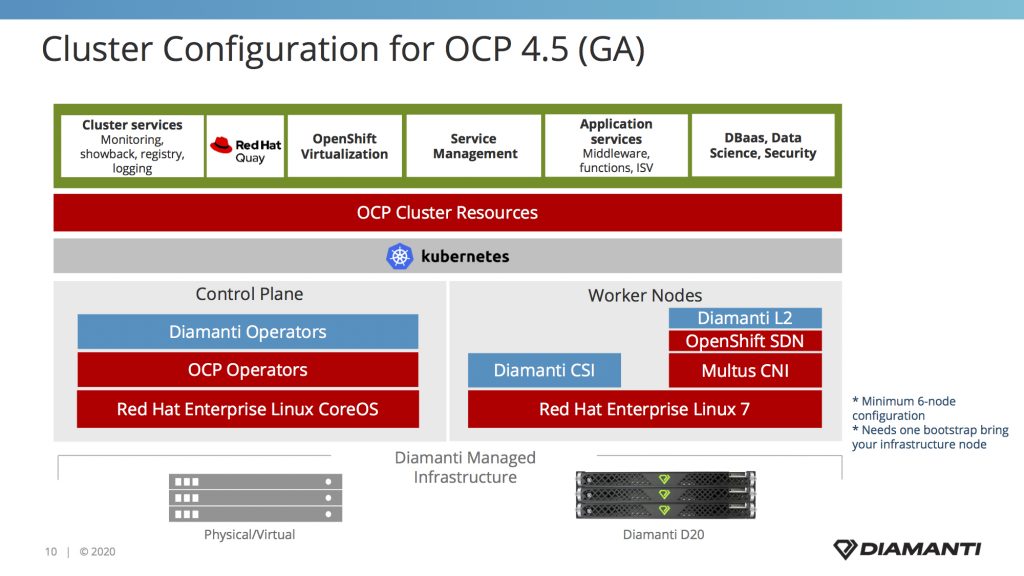Diamanti Deepens Ties to Red Hat
Diamanti has added support for the latest version of the Red Hat OpenShift platform to its bare-metal appliances.
Based on Kubernetes, the Red Hat OpenShift platform is designed to be deployed on a bare-metal server. IT organizations can then employ Red Hat Virtualization framework based on open source kubevirt software to run legacy virtual machines in a Kubernetes environment alongside cloud-native applications.
That approach advances an effort by Diamanti to foster adoption of Kubernetes in bare-metal appliances as a less expensive alternative to deploying Kubernetes clusters on top of a commercial virtual machine platform from VMware.
Brian Waldon, vice president of product for Diamanti, says Red Hat OpenShift 4.5 running on the latest release of the Diamanti D20 RH appliance enables IT teams to optimize applications performance using data plane and I/O-optimized storage and networking architecture based on a hyperconverged infrastructure (HCI) platform.
Support for Red Hat OpenShift 4.5 is arriving at a time when the number of stateful container applications being deployed in on-premises IT environments is finally starting to increase. Previously, most IT teams deployed stateless container applications on Kubernetes clusters that would eventually store data an existing external storage system. However, interest in storing data on the Kubernetes clusters has increased as IT teams look to streamline the operational management of Kubernetes clusters around a single IT administrator. Reducing the total number of administrators involved ultimately reduces the total cost of IT.
Obviously, the number of organizations investing in on-premises IT infrastructure has declined in the wake of the economic downturn brought on by the COVID-19 pandemic. However, there are also many organizations that have accelerated application development initiatives based on containers to drive digital business transformation initiatives that require applications to access data stored locally for either performance or compliance reasons. Regardless of motivations, the number of IT organizations managing stateful container applications in the months ahead should steadily increase in the months ahead, especially as the economy recovers.
In the meantime, IT organizations will continue to evaluate HCI platforms optimized for those applications. In addition to making its software available on its own appliances, Diamanti software is available on HCI platforms from Lenovo.
It’s unclear which of the many flavors of Kubernetes will ultimately dominate on-premises IT environments. Red Hat OpenShift alongside rival offerings from VMware, Rancher Labs and others have emerged as the leading platforms. Dell is optimizing its appliances for the Tanzu platform made available by VMware, an arm of Dell Technologies, while Hewlett-Packard Enterprise (HPE) has been making a case for HPE Ezmeral, a Kubernetes platform optimized for its server and storage systems.
Regardless of platform, managing storage within the context of a Kubernetes environment will be different than it is on legacy platforms. Containerized applications expect infrastructure resources to be able to both scale up and out as required. The challenge IT teams will face is determining which platforms ultimately best enable those infrastructure resources to scale in way that is easiest for them to manage.





